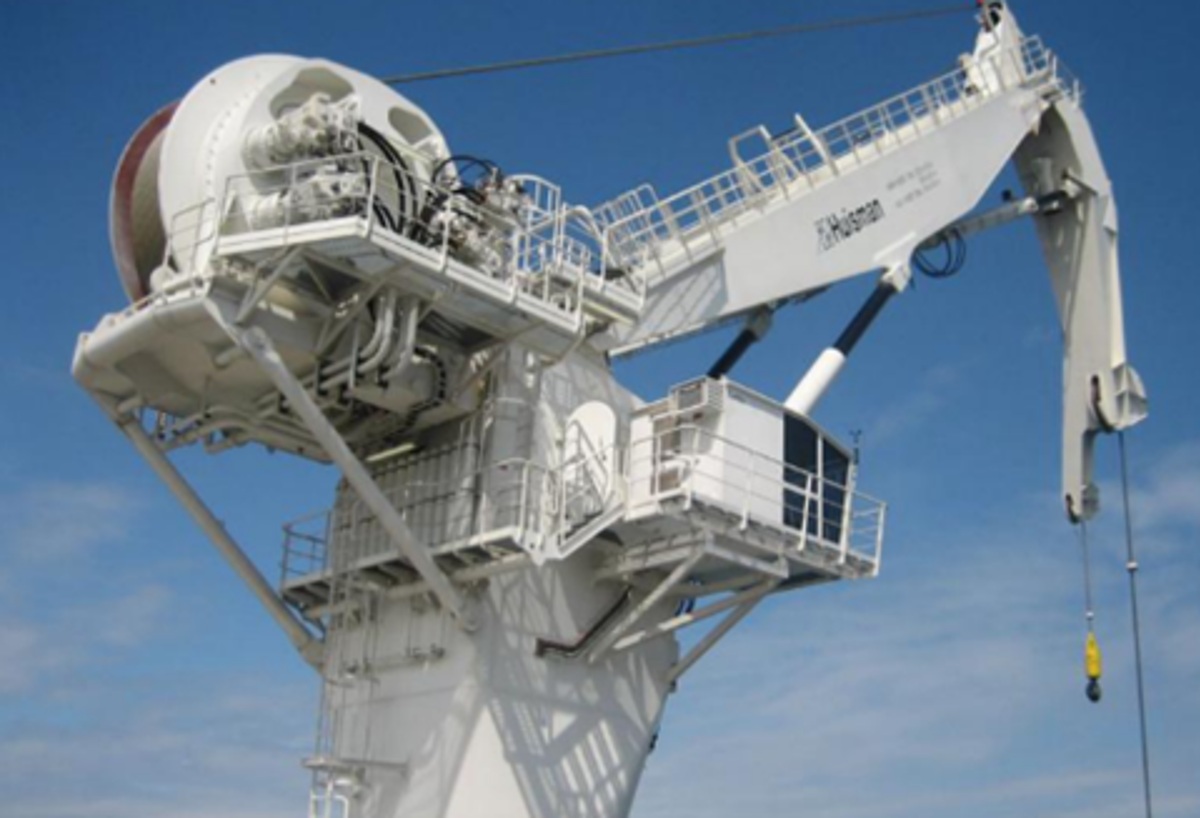Dropped object due to over-ridden limit switch
- Safety Flash
- Published on 2 October 2025
- Generated on 18 November 2025
- IMCA SF 18/25
- 4 minute read
Jump to:
A limit switch on a crane was over-ridden, resulting in wires parting and objects falling from the crane.
What happened?
The event occurred whilst lifting an item (weighing approx. 300kg) from the deck of a vessel deck, for overboarding in subsea operations. The crane operator’s instructions were to heave the crane wire rope to lift the crane hook; whilst doing this, the crane operator disengaged the safety limit switch in order to be able to lift the hook around 2m higher.
As the wire came in, the mini beacon (positioned just above the hook weight – weighing approx. 6kg) contacted the safety limit switch clump weight, resulting in the beacon coming loose and falling to the main deck (approx. 4m). One of the two wire restraints for the clump weight parted, and a cable from one proximity sensor parted. There were no injuries.

Typical knuckle boom crane. Image: Huismann
What went right?
- No-one was in the line of fire - the deck / lift zone was clear of personnel at the time.
- The Bridge Team were proactive in stopping the job, immediately establishing the well-being of the crane operator, and starting to investigate.
- The planned maintenance system for the crane was up to date and mirrored “best practice” guidance from the manufacturer.
- Before the work began:
- Crane pre-start and initial operational checks had taken place.
- A Toolbox Meeting had taken place with the work party (incl. Crane Operator) and this included a review of the vessel's Risk Assessment for Crane Operations. This was supplemented with a discussion on the lifting sequence on site ahead of the event.
What was discovered in the investigation?
- The crane being used for the task was an Active Heave Compensation (AHC) Knuckle Boom design.
- This was the Crane Operator's first rotation onboard this vessel. However, the Crane Operator was experienced in the operation of similar AHC Knuckle Boom Cranes.
- During the lift the Crane Operator had the boom down and knuckled in, this reduced the length of wire usable to “lift” the load.
- The override function on the crane is activated via a screen and disables both a physical and software limit switch for the crane. Both switches are verified weekly as part of the ship's PMS. However it is worth noting that when the unit is in operation it is only possible to check the software switch function.
How could things have been different?
- The decision to use the override high level limit switch could have been made with better team engagement (i.e. stop, review, discuss). This may have identified alternative ways to achieve the same outlines (i.e. booming up & knuckling out).
- During the investigation an opportunity was spotted to improve communications during Crane Operator shift change – though it should be noted that in the specific context of this event, this was not a factor (as crane operations did not cross over a shift change).
What lessons and actions were identified?
- Limit switches and safety devices are there for our protection:
- Don’t override safety devices (limit switches) as part of “normal” operations – where this is critical it should be handled accordingly with standalone risk management (i.e. through a Management of Change process).
- If there is the temptation to override safety devices is present during “normal” operations, a re-assessment of procedures or re-design of equipment may be indicated.
- Procedures and equipment design should make it easy to do things safely - and difficult to do things unsafely.
- Our member took the following actions:
- Reviewed company lifting processes to ensure they adequately address:
- Vessel Specific Familiarisation.
- Lift Planning for Knuckle Boom Cranes (i.e. using the characteristics of the crane to achieve the desired outcome).
- Maintenance / verification of safety systems while the crane is in operation.
- Management of handovers.
- Reviewed company lifting processes to ensure they adequately address:
Related Safety Flashes
-
IMCA SF 05/24
27 February 2024
-
-
IMCA SF 26/23
13 November 2023
-
IMCA SF 14/23
12 June 2023
-
-
IMCA SF 05/21
11 February 2021
IMCA Safety Flashes summarise key safety matters and incidents, allowing lessons to be more easily learnt for the benefit of the entire offshore industry.
The effectiveness of the IMCA Safety Flash system depends on the industry sharing information and so avoiding repeat incidents. Incidents are classified according to IOGP's Life Saving Rules.
All information is anonymised or sanitised, as appropriate, and warnings for graphic content included where possible.
IMCA makes every effort to ensure both the accuracy and reliability of the information shared, but is not be liable for any guidance and/or recommendation and/or statement herein contained.
The information contained in this document does not fulfil or replace any individual's or Member's legal, regulatory or other duties or obligations in respect of their operations. Individuals and Members remain solely responsible for the safe, lawful and proper conduct of their operations.
Share your safety incidents with IMCA online. Sign-up to receive Safety Flashes straight to your email.